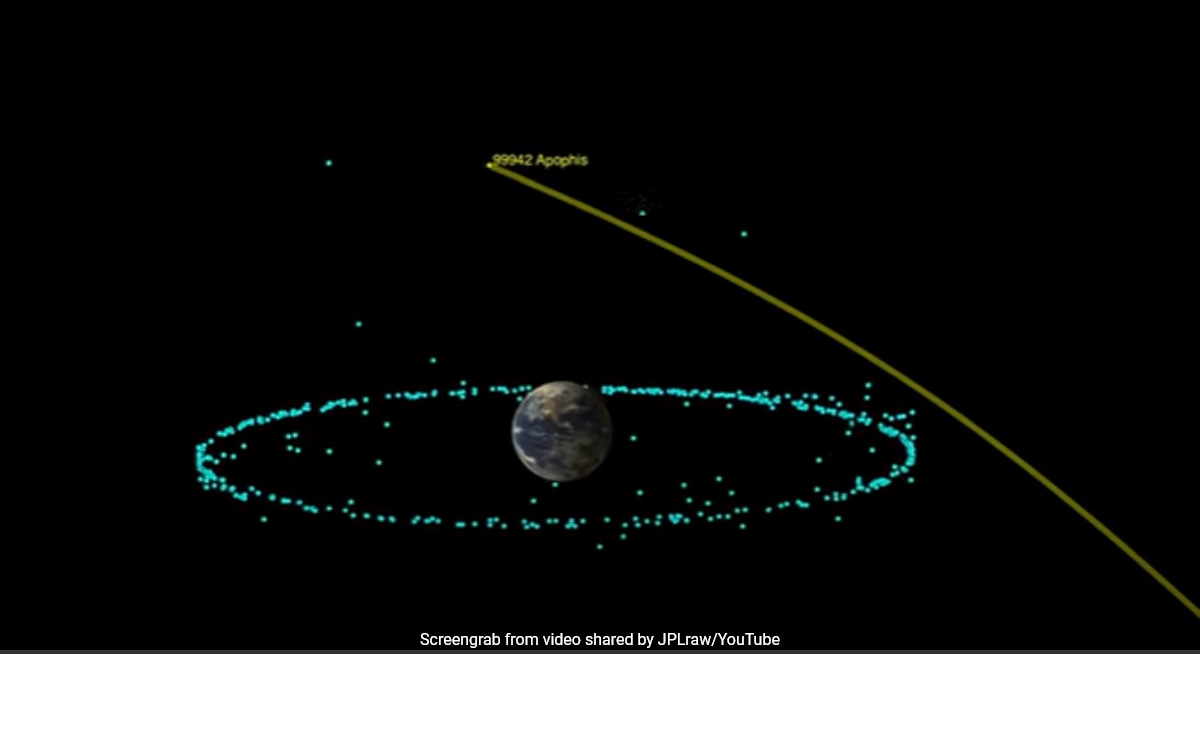NASA has relaunched a mission to study the ‘God of Chaos’ asteroid as it begins to near Earth’s orbit, New York Post reported. The OSIRIS-REx spacecraft that recently returned from deep space after collecting samples from the space rock Bennu has been renamed the OSIRIS-APEX (Origins, Spectral Interpretation, Resource Identification, and Security – Apophis Explorer).
It has now been sent off to study the asteroid Apophis’ extremely close flyby of Earth in 2029. The asteroid also known as ”God of Chaos” is expected to fly by Earth on April 13, 2029, from about only 20,000 miles away. Scientists originally said there was about a 3% chance the asteroid would collide with Earth, but over the years they realized there would be no collision in 2029.
In 2021, NASA’s Jet Propulsion Laboratory released an animated video depicting the orbital trajectory of asteroid Apophis as it zooms safely past Earth on April 13, 2029.
Watch it here:
As per NASA, Apophis’ close encounter with Earth will change the asteroid’s orbit and the length of its 30.6-hour day. The encounter also may cause quakes and landslides on Apophis, which could then expose material that lies beneath the asteroid’s surface.
”OSIRIS-APEX will study Apophis immediately after such a pass, allowing us to see how its surface changes by interacting with Earth’s gravity,” said Amy Simon, the mission’s project scientist based at NASA’s Goddard Space Flight Center in Greenbelt, Maryland.
Scientists estimate that asteroids of Apophis’ size, about 367 yards across (about 340 meters), come this close to Earth only once every 7,500 years.
”The close approach is a great natural experiment. We know that tidal forces and the accumulation of rubble pile material are foundational processes that could play a role in planet formation. They could inform how we got from debris in the early solar system to full-blown planets,” Dani Mendoza DellaGiustina, principal investigator for OSIRIS-APEX, said in a NASA press release last week.
By April 2, 2029, OSIRIS-APEX’s cameras will begin taking images of the asteroid as the spacecraft catches up to it. It will then arrive at Apophis on April 13, 2029, and stay with it for the next year and a half studying any changes caused by the close encounter.
Upon reaching the surface, the ship will not touch down, rather using its thrusters to kick up the asteroid’s surface and expose material for scientists to sample.













